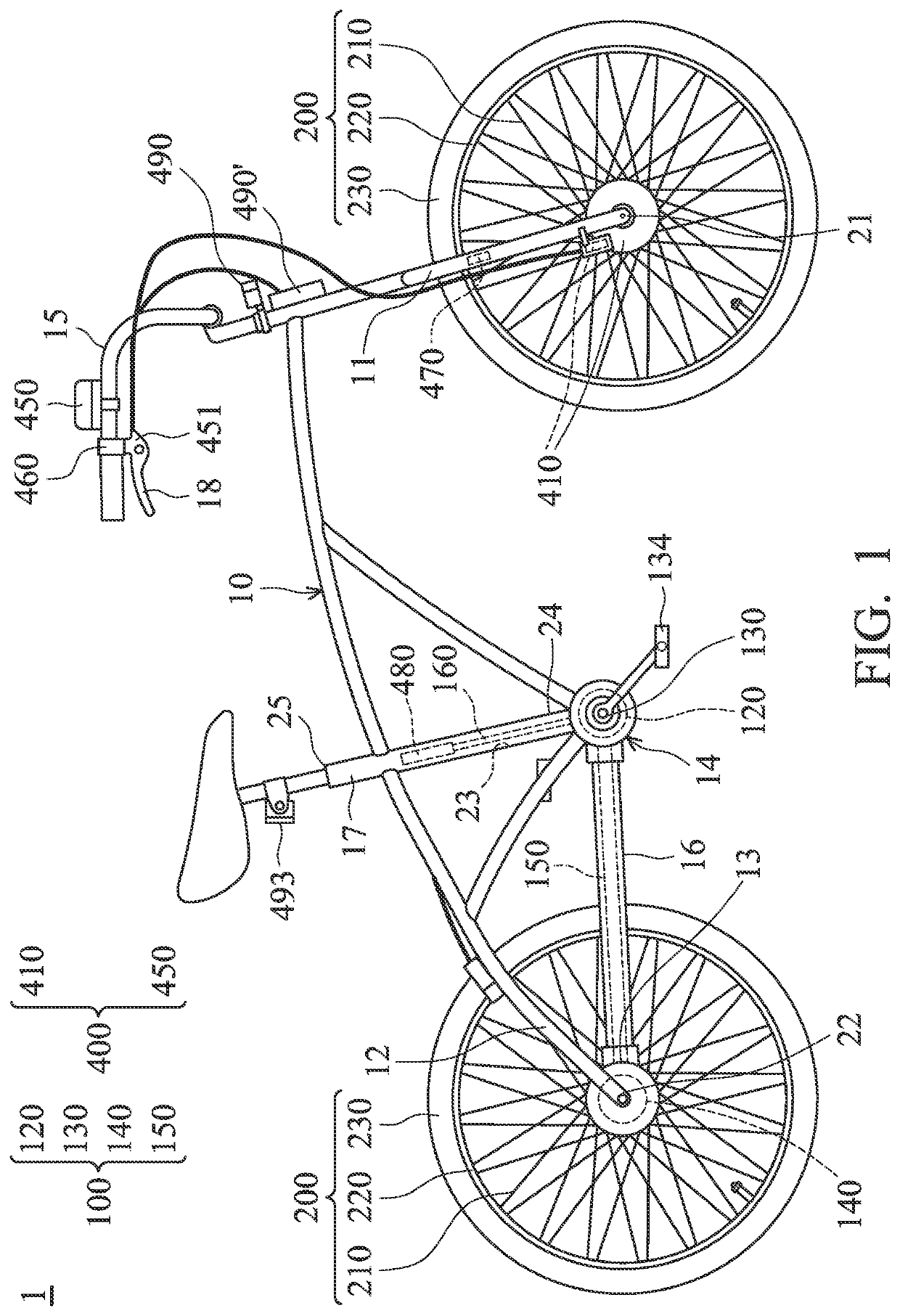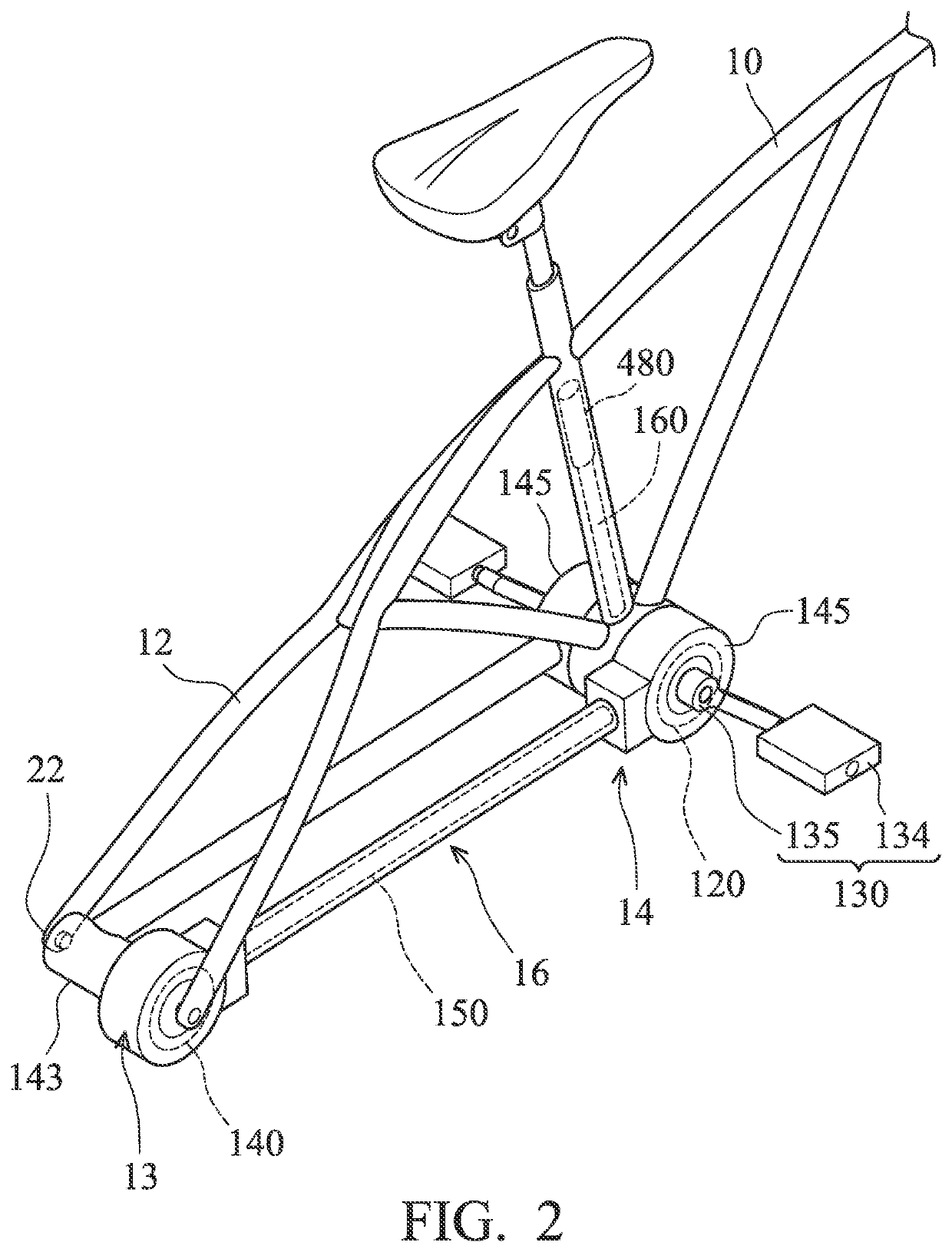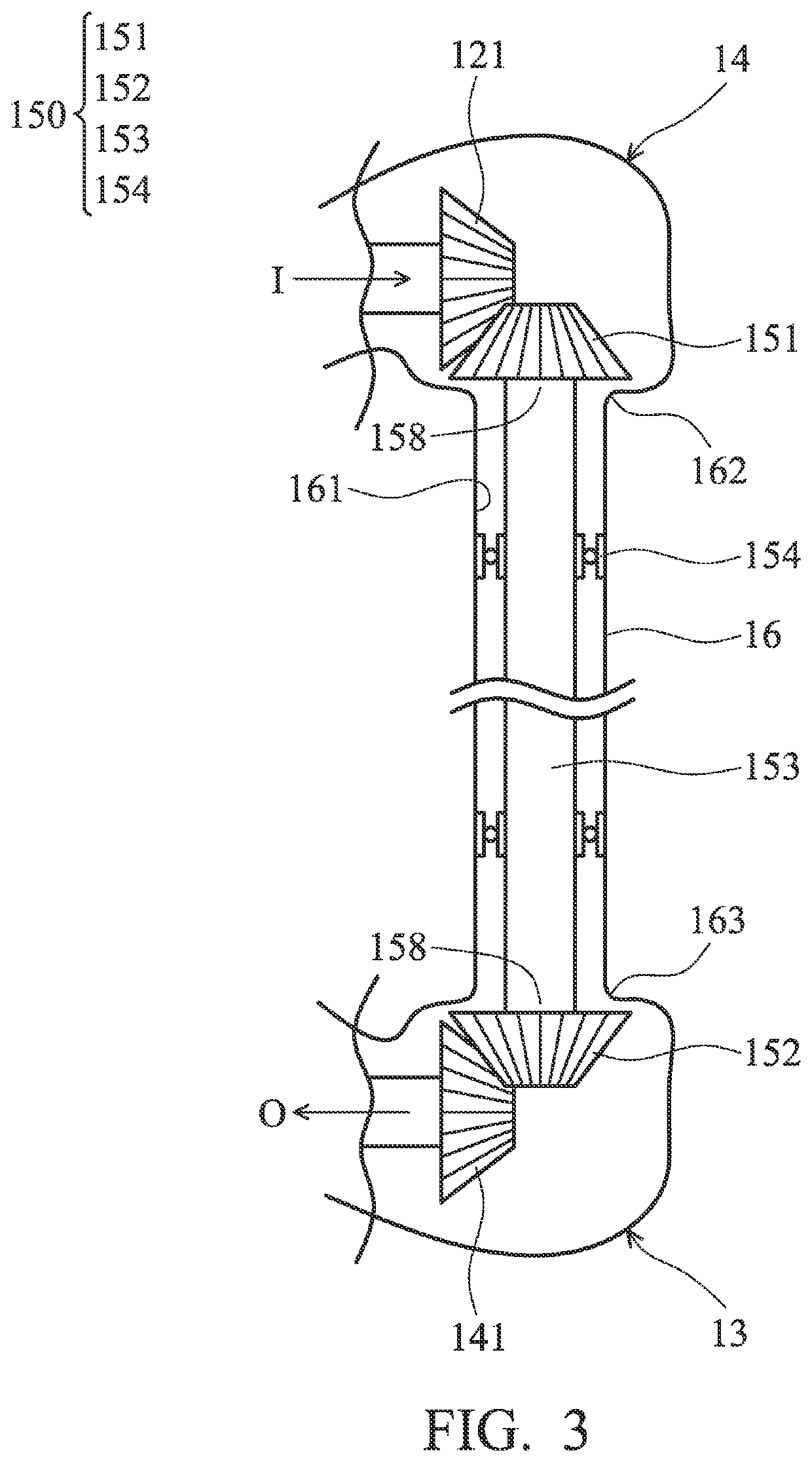Green bike
a technology of green bikes and bicycles, applied in the field of green bikes, can solve the problems of increasing the possibility of mechanical corrosion or malfunction in nominal weather, increasing global waste or carbon emission, and tire unsuitability for use, and achieves the effects of reducing the risk of mechanical corrosion
- Summary
- Abstract
- Description
- Claims
- Application Information
AI Technical Summary
Benefits of technology
Problems solved by technology
Method used
Image
Examples
Embodiment Construction
[0047]The following description is of the best-contemplated mode of carrying out the invention. This description is made for the purpose of illustrating the general principles of the invention and should not be taken in a limiting sense. The scope of the invention is best determined by reference to the appended claims.
[0048]The various embodiments of this invention can simplify the sophisticated bike design, reducing manufacturing cost and space consumption of those freewheels, front derailleur, chain, sprocket, back derailleur. In addition, it may facilitate rider with required safer operational mechanism with the most comfort and better riding experiences. To achieve the objective of the invention and design an environmentally friendly, i.e. Eco friendly or Earth friendly, green bike which utilizes the “4R” core principles, a few more disclosures are presented. First, a transmission system of a green bike is provided, which reduces elements or parts exposure thereof to the outside...
PUM
 Login to View More
Login to View More Abstract
Description
Claims
Application Information
 Login to View More
Login to View More - R&D
- Intellectual Property
- Life Sciences
- Materials
- Tech Scout
- Unparalleled Data Quality
- Higher Quality Content
- 60% Fewer Hallucinations
Browse by: Latest US Patents, China's latest patents, Technical Efficacy Thesaurus, Application Domain, Technology Topic, Popular Technical Reports.
© 2025 PatSnap. All rights reserved.Legal|Privacy policy|Modern Slavery Act Transparency Statement|Sitemap|About US| Contact US: help@patsnap.com



